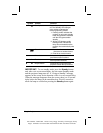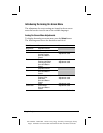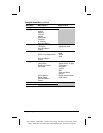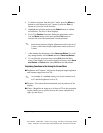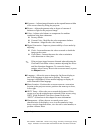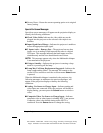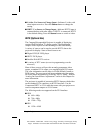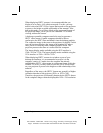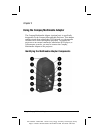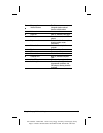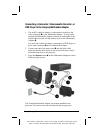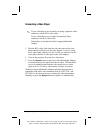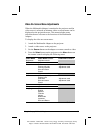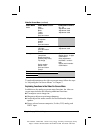
Using the Projector 31
Part Number: 216023-001 - Writer: Carey Gregg - Saved by: The Integrity Group
Pages: 10 Words: 1921 Saved date: 09/22/0010:22 AM File Name: Ch02.doc
When displaying HDTV content, it is recommended that you
display it in its native 16:9 widescreen mode. For this, you may
need to select the HDTV Fill to Aspect Ratio mode on the projector
to preserve the height-to-width relationship of the material. Note
that in this mode, you will have black stripes on top and bottom of
the projected image, just as you see on a standard TV set when
viewing widescreen content.
A desktop or portable computer can also be used to generate a
HDTV video stream. Capable computers should be able to
read/acquire the HDTV data and blend it into the desktop graphics.
The composite image is then sent to the projector for display. In this
case, the projector displays the image at the standard 4:3 aspect
ratio, just as it would any other computer graphics mode. The
projector processes the data as it comes from the computer.
The largest display mode available using the DVI interface is
1280 x 1024 at 75 Hz. The largest display mode available using the
VGA interface is 1280 x 1024 at 75 Hz.
When displaying HDTV content in a window as part of your
desktop environment, it is recommended to project it in the
computer’s native 4:3 mode since the computer has already
embedded the HDTV video stream in widescreen format within the
window. To do so, you may need to select the Fill to Screen mode
on your projector to preserve the height-to-width relationship of the
material.
Regardless of the source, the HDTV formats are generally of higher
resolution than that of the projector (XGA, or 1024 x 768).
Therefore, the projector will normally downscale the HDTV data to
fit the complete image within the displayable 1024 x 768 resolution.



